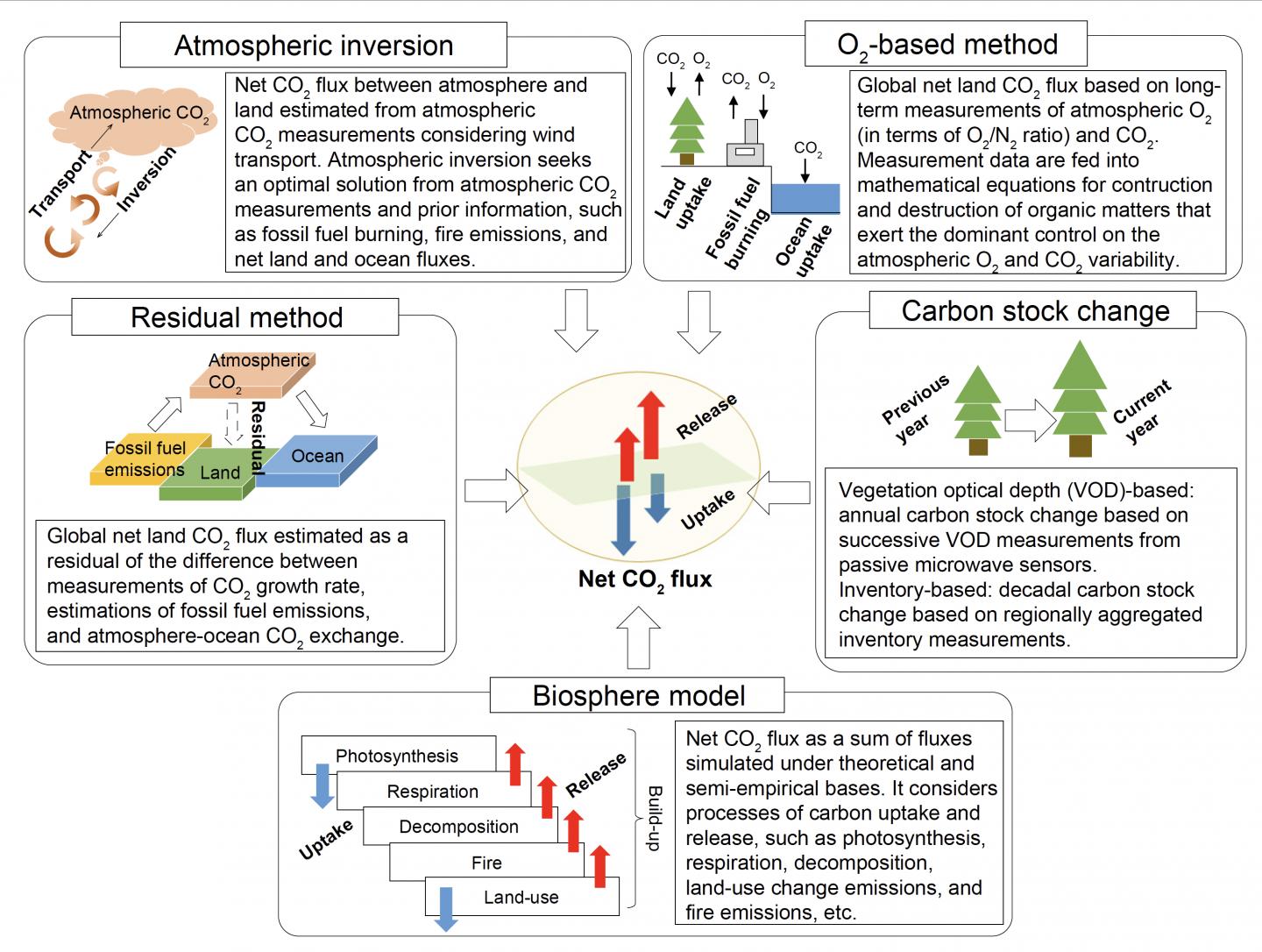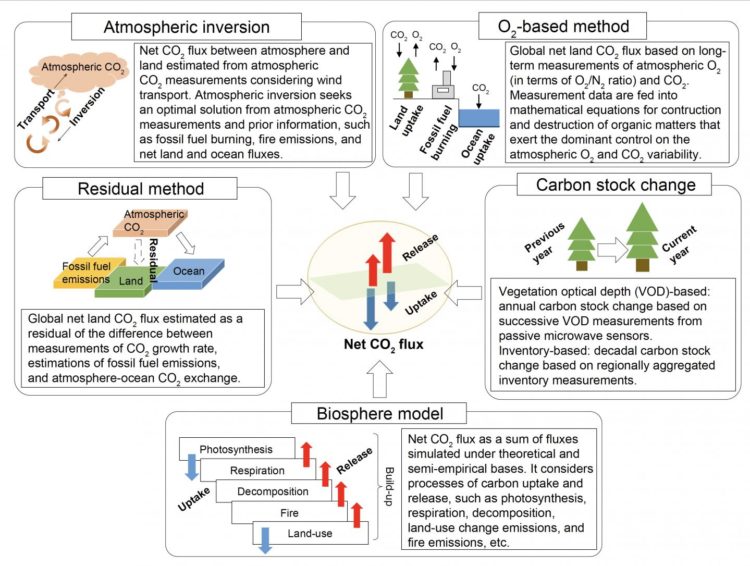
Credit: Masayuki Kondo
Approximately 30 percent of CO2 emitted to the atmosphere by human activities, mainly the use of fossil fuels and deforestation, is taken up by terrestrial ecosystems such as forests and grasslands. The recent reports from the IPCC concluded that new land-use options to enhance this terrestrial carbon sink are needed to meet the goals of the Paris Agreement on Climate. “Yet, it is important to understand the best science-based estimate of where atmospheric CO2 is fixed in terrestrial ecosystems today, and our study makes a significant step in that direction,” says Masayuki Kondo, an Assistant Professor at the Center for Environmental Remote Sensing, Chiba University.
The net CO2 balance between the atmosphere and land is referred to as the “net CO2 flux”, which is the sum of CO2 absorption by photosynthesis (-) and CO2 emissions (+) due to respiration, decomposition of soil organic matter, forest fires, and land-use changes such as deforestation and forest conversion to farmland. A series of the IPCC assessment reports in the past have demonstrated that calculating the total CO2 balance over different regions of the globe is a challenging task.
“There is an urgent need of how much carbon mitigation is required to achieve the temperature targets of the Paris agreement, but we still had a wide spread of estimates on how much CO2 the world terrestrial ecosystems are removing,” says Kondo. He and his colleagues have been trying to comprehensively understand net CO2 flux from the latest results of ‘terrestrial biosphere models’ that simulate terrestrial CO2 fluxes of various processes on theoretical and semi-empirical basis and ‘atmospheric inversions’ that read atmospheric CO2 concentration measured by a global network of monitoring stations and use global 3D atmospheric transport models to provide a dynamic picture of the CO2 fluxes exchanged between different biomes and the atmosphere.
“Up until now, scientists in various fields of earth science have proposed many kinds of methods to estimate net CO2 flux, including biosphere models and atmospheric inversions. These methods do not provide consistent results until we added the CO2 that is outgassed to the atmosphere by rivers and lakes to the biosphere models”. Such inconsistencies between different approaches to mapping terrestrial carbon fluxes most likely to have led the mismatches in flux estimations from biosphere models and atmospheric inversions shown in the IPCC Fifth Assessment Report.
Kondo began to revise the definition of each model with not only those involved in the IPCC Fifth Assessment Report but also in a team of multi-disciplinary researchers belonging to 24 universities and research institutions around the world. “The researchers’ areas of expertise were diverse, ranging from ecology, environmental science, atmospheric physics and chemistry, hydrology, and remote sensing. The periodic update of the Global Carbon Budgets has also helped our cause. We discussed over and over to compensate for differences in definitions.”
As a result of the integrated analysis, the research team succeeded in reducing the mismatches between net CO2 fluxes from multiple data sources. With verifying the accuracy of each method, the research team will continue further research to minimize the discrepancy between net CO2 flux estimations, even at a smaller scale of major individual nations. Lastly, Kondo notes, “With the degree of accuracy that we achieved, we are getting confidence in how much CO2 the world terrestrial ecosystems are removing today. This is a good sign of our progress towards the goals of the Paris agreement. We need to continue working together with experts from various fields of research more than ever.” The team reports their results on December 12 in Global Change Biology.
###
Reference:
Kondo M., Patra P.K., Sitch S., Friedlingstein P., Poulter B., Chevallier F., Ciais P., Canadell J.G., Bastos A., Lauerwald R., Calle L., Ichii K., Anthoni P., Arneth A., Haverd V., Jain A.K., Kato E., Kautz M., Law R.M., Lienert, S., Lombardozzi D., Maki T., Nakamura T., Peylin P., Rödenbeck C., Zhuravlev R., Saeki T., Tian H., Zhu D., Ziehn T., “State of the science in reconciling top-down and bottom-up approaches for terrestrial CO2 budget”, Global Change Biology, DOI:10.1111/gcb.14917
Contact:
Masayuki Kondo Ph.D.
Assistant Professor
Center for Environmental Remote Sensing (CEReS), Chiba University
Phone: +81-43-290-3860
e-mail: [email protected]
Media Contact
Saori Tanaka
[email protected]
81-043-290-3022
Related Journal Article
http://dx.





